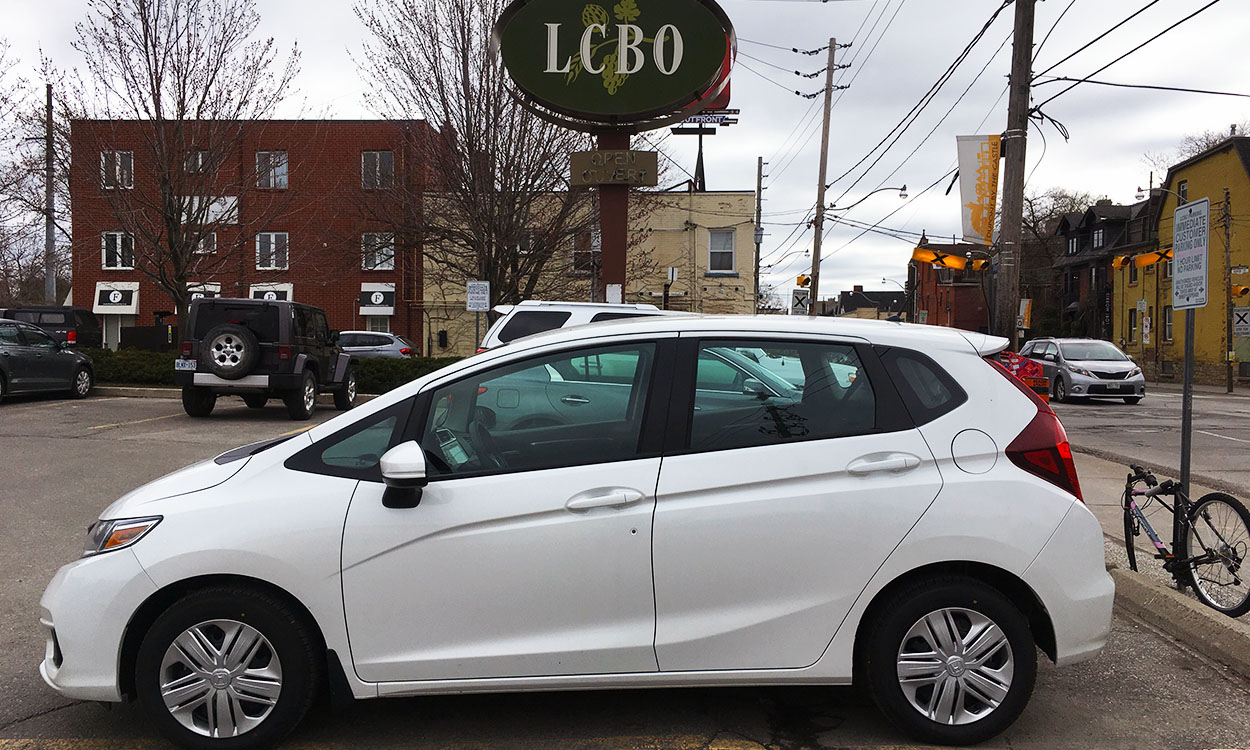The point of this series of articles is to shine a touch of reality into car reviewing. Few drivers race their daily beater at the track on weekends, or across the Gobi Desert in winter. For most of us, driving’s a mundane necessity no more notable (or less important) than a trip to the local liquor store.
In that spirit, in this edition, I bring you the Honda Fit: a Japanese-designed mobile miracle of storage that Earl Tupper and Ingvar Kamprad (inventors of Tupperware and IKEA, respectively) themselves would toast.
Measuring just 4100 mm long, 1694 mm wide, the Fit performs according to its namesake in tight urban traffic, divining minute parking spaces and shoehorning shortcuts with a fine 5.3-metre turning radius. You’re in the parking lot, you load up, and you’re out!
Despite being just 1524 mm tall, the Fit manages to deliver 470 liters of storage space with the backseats down, and up to an astounding 1492 with them up.
But be careful! Once you’ve weighed it down with gallons of rice wine and Bavarian-style lagers (a brewing technique the Japanese allegedly copped in 1914 from the Germania brewery in Tsingtao) the Fit’s ground clearance of 135 mm sinks to 111 mm fully loaded.
So, mind the potholes. This is a budget-lover’s vehicle and you’ll feel the bumps despite the torsion beam rear suspension.
We’re not here to vamp on the glories of a 1.5L four-banger which leaps from 0 to 100 kph eventually. Instead, let’s celebrate the Fit’s clever-as-hell design that considers every cubic inch, like how the driver’s cupholder folds forward out of the dashboard’s extreme left and how the Fit folds and unfolds six ways from Sunday with what Honda calls The Magic Seat. Okay, four ways from Sunday: the Utility, Long, Tall, and Refresh modes.
(Keep in mind these ideas emerged from a culture preoccupied with space optimization, where, for decades, people have been paid to push commuters deeper into already crammed subways. Listen to what they have to say.)
Here’s how those four combinations of folding work.
Utility Mode: This is what you’d expect from any hatchback, SUV or CUV: pull up the stops securing the back seats, then fold them down. Thunk! You have an enlarged flat surface. It’s not enough space to transport drywall, so no pick-up truck manufacturers are shaking in their boots, but it’s thoroughly utilitarian. And it’s just the beginning.
Long Mode: You fold the backseats down, same as the previous, but then drag the front passenger seat forward to recline it flat. Suddenly you have extra length into the front for your skis, ladder, reclining Irish wolf hound, or Zdeno Chara-length hockey stick.
Tall Mode: Lift the backseat bases up and fold their levered legs beneath flat into the seat. Suddenly you have an extra foot of height in the back for storage of anything from an amplifier cabinet to a plant. It’s like a tiny cube van. (A sugar cube?)
Refresh Mode: Follow the same directions as the tall mode, then return to the front seat, remove the headrest and slide it all the way forwards, to flatten it. Now, flat, slide it backwards. At its fully extended length, you lower the back seat to its regular position and presto! You have a chaise longue extending from the back to the front. Go ahead and do the dirty!
Why tell you all this? Well, so you can load up and transport a month’s worth of tipples in a single trip if you choose. Then again, too many visits to the liquor store and you may soon be experiencing what Dickens called “reduced circumstances in the world”.
Meaning? It wouldn’t be easy to live in your Honda Fit but considering the size of some Tokyo hotel rooms, maybe if you had to, you could!


